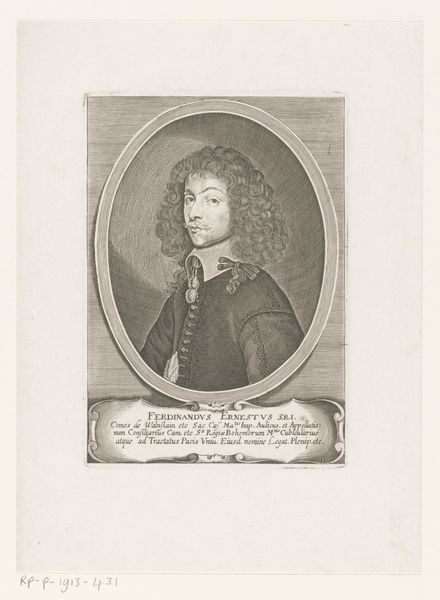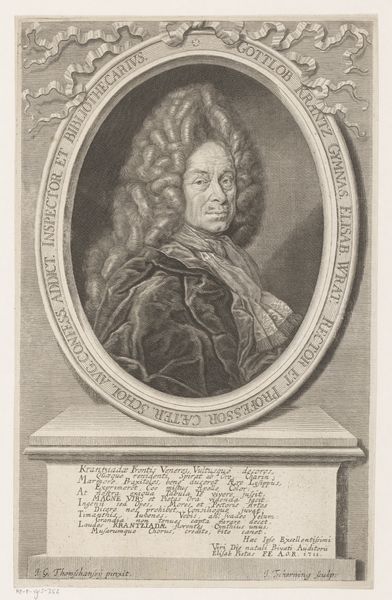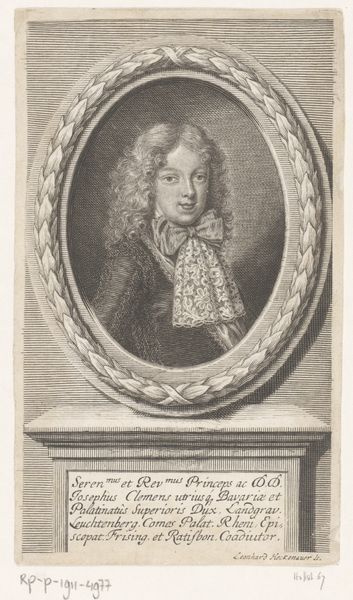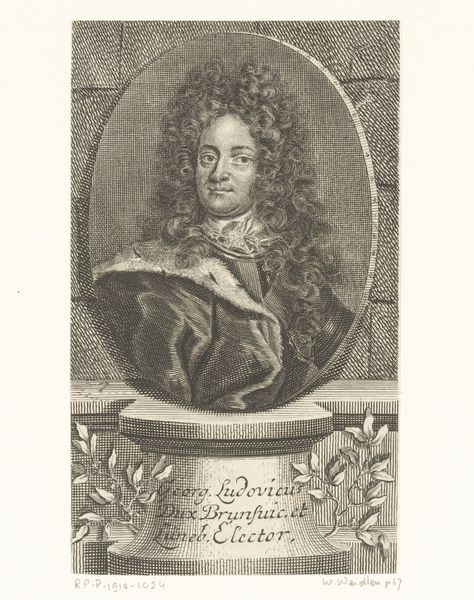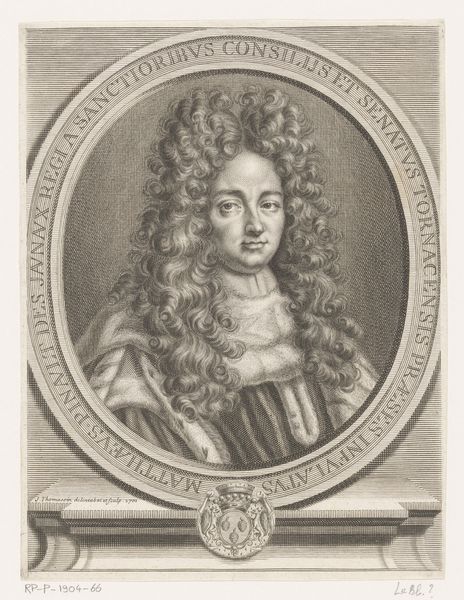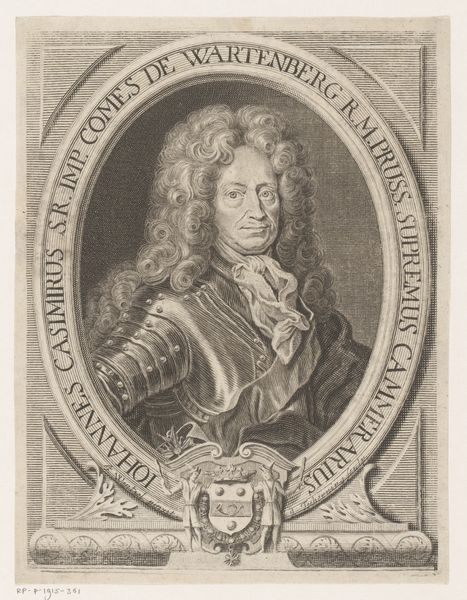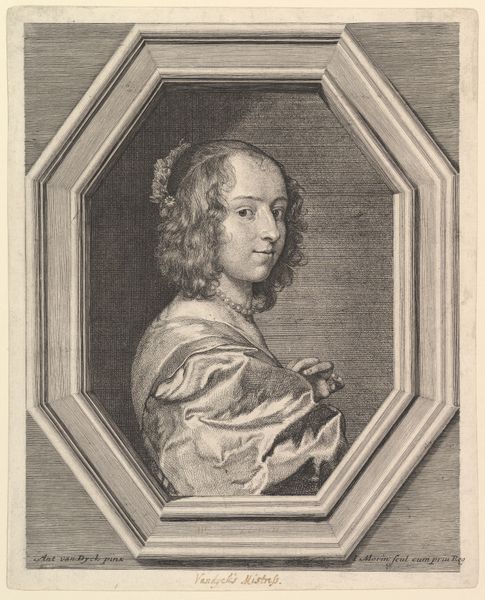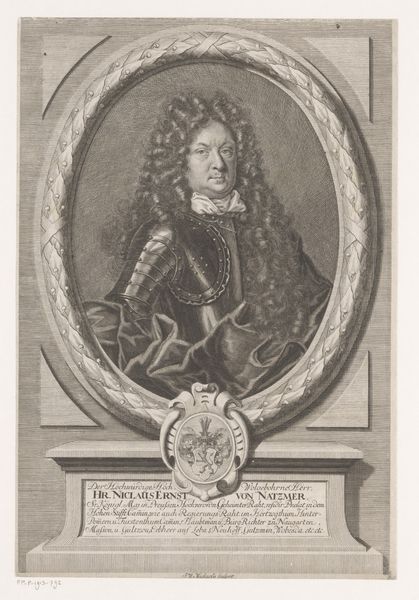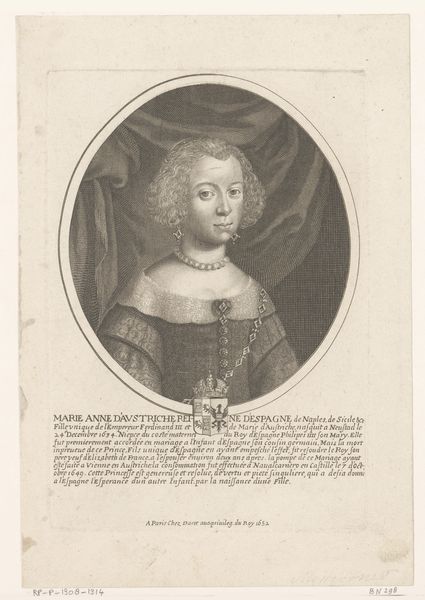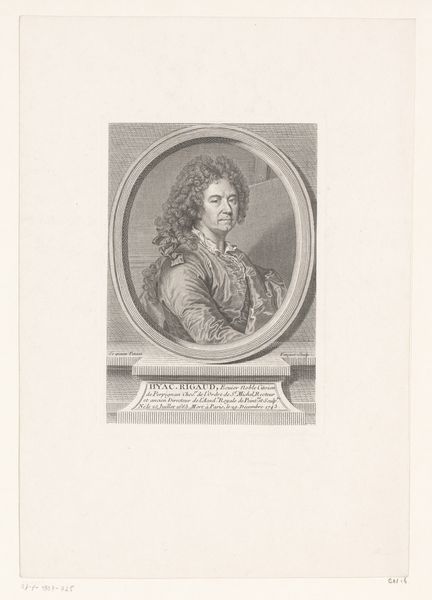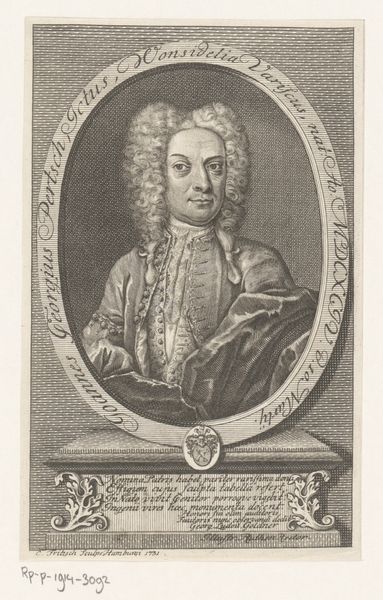
#
pencil drawn
#
aged paper
#
toned paper
#
parchment
# print
#
old engraving style
#
old-timey
#
19th century
#
golden font
#
historical font
#
columned text
Dimensions: 258 mm (height) x 203 mm (width) (plademaal)
Curator: This engraving depicts Margrethe Cathrine Vibe, and it was created sometime between 1643 and 1683 by Hubert Schaten. Editor: My first impression is one of restrained formality, bordering on melancholy. The fine lines create a delicate texture, but the sitter's gaze feels distant. Curator: The composition certainly emphasizes formality. Observe how the oval frame, adorned with stylized leaves, contains the subject. Below, a rectangular base supports Latin text, anchoring the portrait within a classical structure. Editor: Absolutely. But considering the social context, one might interpret this formality as a reflection of Vibe’s status. Portraiture of this kind was typically commissioned by or for members of the upper class, signaling power and prestige. What do you make of the Latin inscription? Curator: The text is integral to understanding the work. "SIC OCVLOS, FRONTEM..." it elevates Vibe to almost celestial status, comparing her to a star. This highlights the conventions of portraiture as idealization. Editor: Agreed. But beyond idealization, the inscription also underscores the constructed nature of identity in that period. Her image, immortalized and disseminated, contributes to shaping public perception. What kind of statements could she have wanted to create? Was she involved in the text selection? Curator: Such agency of the sitter is definitely an interesting consideration. I focus on how Schaten used the print medium here. Notice how the intricate line work allows for a subtle modulation of light and shadow. The delicate hatching gives volume to her face and depth to her garments. Editor: Indeed, it speaks to the power of printmaking as a technology, granting reproducibility and broader access to imagery. Though likely still confined to the elite, the possibility of distribution allows for greater engagement with the subject’s persona and the ideologies she embodies. Curator: Looking at this portrait reminds me how much the formal conventions of artmaking are really vehicles for subtle communication, even if they may be easily overlooked today. Editor: For me, the portrait sparks questions about the interplay between image, text, and social status. By thinking about the historical context, we gain a much deeper insight into how early images constructed identities.
Comments
No comments
Be the first to comment and join the conversation on the ultimate creative platform.
